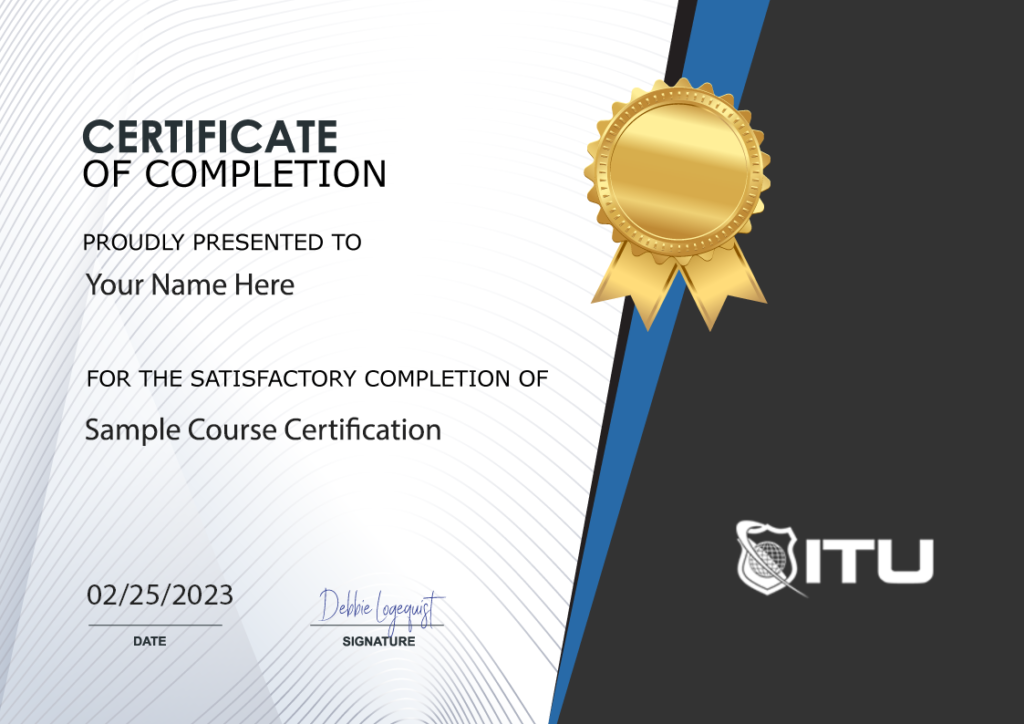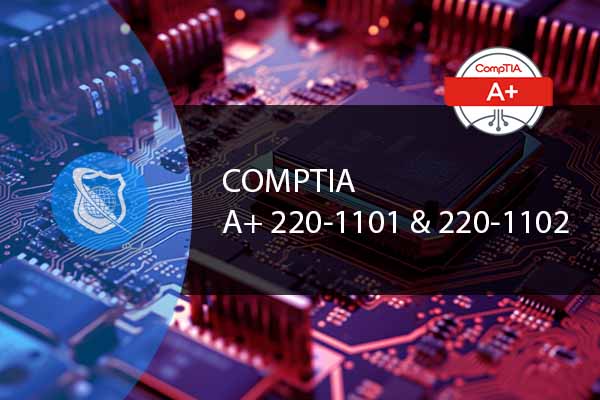CompTIA A+ Course (220-1101 and 220-1102) : Master IT Skills
This CompTIA A+ Certification course is designed to lay the foundations for a future career in IT, including essential technologies like hardware and network devices software, networking and software troubleshooting, installation, and configuration. By covering changing technologies and series of topics students will be able to understand the hardware and network, software troubleshooting basics, and security procedures and can take the CompTIA A+ 220-1101 – Core 1 and 220-1102 – Core 2 exams upon successful completion of this course.
Included In This Course



Closed Captions



Certificate of Completion
Course Description for CompTIA A+ Certification (220-1101 and 220-1102)
The CompTIA A+ Certification course is a comprehensive program designed to equip learners with the essential skills and knowledge needed to excel in the IT industry. Covering both Core 1 (220-1101) and Core 2 (220-1102) exams, this course delves into a wide array of topics such as hardware, networking, mobile devices, operating systems, and security protocols. You’ll gain hands-on experience with troubleshooting and problem-solving, making you proficient in managing and maintaining various IT environments.
Throughout the course, you’ll explore crucial concepts like PC components, display devices, storage solutions, CPU upgrades, network theories, cloud computing, and virtualization. Additionally, the course includes modules on operating system management, installation, and maintenance, along with security measures and best practices to protect data and prevent malware. By the end of the course, you’ll be fully prepared to tackle the CompTIA A+ certification exams and pursue a rewarding career in IT.
What You Will Learn in CompTIA A+ Certification
By enrolling in the CompTIA A+ Certification course, you will acquire a solid foundation in IT fundamentals, along with practical skills and knowledge that are highly valued in the industry. Here’s what you can expect to learn:
- Comprehensive understanding of PC components and safety procedures.
- Installation and configuration of peripheral devices and multimedia devices.
- Supporting and troubleshooting multiple drive types and memory.
- Installing and upgrading CPUs, and configuring BIOS/UEFI settings.
- Understanding network theories, including wired and wireless networks.
- Managing and troubleshooting operating systems, including Windows, Linux, and macOS.
- Implementing security measures to protect data and prevent malware.
- Supporting and troubleshooting mobile devices and printers.
Who This CompTIA A+ Certification Course is For
This course is ideal for anyone looking to start or advance their career in IT. Whether you are a beginner or an experienced professional, this course will provide you with valuable skills and knowledge.
- Aspiring IT professionals seeking a foundational certification.
- Help desk technicians, technical support specialists, and IT support administrators.
- Students and graduates aiming to enter the IT field.
- Career changers looking to transition into IT roles.
- Professionals seeking to validate their IT skills with a recognized certification.
Possible Jobs You Can Get With This Knowledge
Completing the CompTIA A+ Certification course opens up numerous career opportunities in the IT industry. Here are some of the roles you could pursue:
- IT Support Specialist: Providing technical assistance and support for computer systems and software.
- Help Desk Technician: Handling user issues and troubleshooting hardware and software problems.
- Technical Support Specialist: Managing and resolving technical issues for end users.
- IT Support Administrator: Overseeing IT operations and ensuring smooth functioning of systems.
- Field Service Technician: Installing, repairing, and maintaining computer equipment and networks.
Average Industry Salaries for People with CompTIA A+ Certification Skills
Investing in this course can significantly enhance your earning potential. Below are the average salary ranges for various job roles in the IT industry:
- IT Support Specialist: $40,000 – $60,000 annually.
- Help Desk Technician: $35,000 – $55,000 per year.
- Technical Support Specialist: $45,000 – $65,000 annually.
- IT Support Administrator: $50,000 – $70,000 per year.
- Field Service Technician: $40,000 – $60,000 annually.
Get Started Today with CompTIA A+ Certification
Take the first step towards a successful career in IT by enrolling in the CompTIA A+ Certification course today. Gain in-depth knowledge, practical skills, and a globally recognized certification to stand out in the job market. Join a community of learners and experts dedicated to mastering IT. Start now and pave your way to a thriving career in the ever-evolving field of information technology.
Key Term Knowledge Base: Key Terms Related to CompTIA A+ Certification
Understanding key terms is essential for anyone preparing for the CompTIA A+ certification. This certification covers a wide range of topics in IT, and being familiar with the specific terminology can greatly aid in comprehending the course material and succeeding in the exams. The following list includes key terms that are integral to the CompTIA A+ syllabus.
| Term | Definition |
|---|---|
| BIOS | Basic Input/Output System: Firmware used to perform hardware initialization during the booting process. |
| UEFI | Unified Extensible Firmware Interface: A modern version of BIOS with more features. |
| Motherboard | The main printed circuit board in computers, holding many of the crucial components. |
| CPU | Central Processing Unit: The primary component of a computer that performs most of the processing inside a computer. |
| RAM | Random Access Memory: A form of computer memory that can be read and changed in any order. |
| SATA | Serial ATA: A computer bus interface for connecting host bus adapters to mass storage devices. |
| IDE | Integrated Drive Electronics: An earlier standard for connecting storage devices like hard drives. |
| PCI Bus | Peripheral Component Interconnect: A hardware bus for connecting peripheral devices to a computer. |
| DIMM | Dual In-line Memory Module: A series of random-access memory integrated circuits. |
| SO-DIMM | Small Outline DIMM: A smaller version of DIMM used in laptops and other space-constrained devices. |
| ECC RAM | Error-Correcting Code Random Access Memory: A type of RAM that can detect and correct data corruption. |
| SSD | Solid State Drive: A storage device using integrated circuit assemblies to store data. |
| Virtualization | The act of creating a virtual version of something, including virtual computer hardware platforms, storage devices, and computer network resources. |
| Cloud Computing | The delivery of different services through the Internet, including data storage, servers, databases, networking, and software. |
| Network Hardware | Physical devices required for communication and interaction between devices on a network. |
| Operating Systems | Software that manages computer hardware, software resources, and provides common services for computer programs. |
| Linux | An open-source Unix-like operating system based on the Linux kernel. |
| macOS | An operating system created by Apple Inc., designed to run on their Macintosh computers. |
| Windows OS | A group of several proprietary graphical operating system families developed by Microsoft. |
| Firewalls | Network security systems that monitor and control incoming and outgoing network traffic based on predetermined security rules. |
| IP Addressing | A numerical label assigned to each device connected to a computer network that uses the Internet Protocol for communication. |
| Data Backup | The process of copying and archiving computer data so it may be used to restore the original after a data loss event. |
| Troubleshooting | The process of diagnosing the source of a problem and resolving it. |
| Peripheral Devices | External devices that provide input and output for the computer. |
| Mobile Devices | Portable computing devices such as smartphones and tablets. |
| Network Technology | The hardware and software that enable networking capability. |
| Security Basics | Fundamental concepts and practices for securing computer systems and data. |
| Operational Procedures | Standard processes and practices for maintaining and troubleshooting computer systems. |
| Software Troubleshooting | Identifying and resolving issues related to software operation. |
| Hardware Troubleshooting | Identifying and resolving problems with computer hardware. |
| Client Support | Providing assistance and technical support to users of computer software and hardware. |
| SaaS Applications | Software as a Service; a software distribution model in which applications are hosted by a third-party provider and made available to customers over the internet. |
| Scripting Techniques | Methods used for automating tasks using scripting languages. |
| Virtual Machines | An emulation of a computer system, providing the functionality of a physical computer. |
| Data Recovery | The process of retrieving lost, inaccessible, corrupted, damaged, or formatted data from secondary storage, removable media, or files when the data stored in them cannot be accessed in a usual way. |
| Routing Fundamentals | Basic concepts and practices for directing internet traffic in a network. |
| Drag-and-Drop Activities | Interactive tasks where elements are dragged and placed into different contexts or interfaces. |
| Performance-Based Tasks | Tasks that require demonstrating the ability to perform specific actions or procedures. |
| Multiple-Choice Questions | A form of assessment where respondents select the best answer from several choices. |
| Networking Basics | Fundamental concepts and skills for building, maintaining, and troubleshooting computer networks. |
| Help Desk Support | Providing assistance and technical support to users experiencing problems with computer hardware or software. |
| Desktop Support Technician | A professional who provides technical support and troubleshooting services for desktop computers. |
| Field Service Technician | A technician who travels to the customer’s site to provide installation and repair services. |
| ISO 17024 | An international standard that sets out criteria for an organization’s certification program for individual persons. |
This comprehensive list of terms provides a solid foundation for those studying for the CompTIA A+ exams, offering a clear understanding of the key concepts and technologies they will encounter.
FAQs About CompTIA A+ Core 1101 and Core 1102
What is the difference between A+ 220-1101 and 220-1102?
A+ certification has two exams: 220-1101 and 220-1102. The 220-1101 exam covers mobile devices, networking technology, hardware, virtualization, and cloud computing, while the 220-1102 exam covers operating systems, security, software, and operational procedure. There is about a 40% difference between the 1102 and 1002 exams. The new A+ certification focuses more on troubleshooting and how to support today’s expanded technology environments.
What is CompTIA A+ 220-1101?
220-1101 is a part of the CompTIA A+ certification exam, which covers mobile devices, networking technology, hardware, virtualization, and cloud computing. It is one of the two exams that make up the A+ Core Series, the other being 220-1102, which covers operating systems, security, software, and operational procedures. The certification is an industry standard for establishing a career in IT and is designed to test the core skills required to work in IT. There are various free and paid training courses available online to prepare for the exam
What is CompTIA A+ 220-1102?
220-1102 is the second part of the A+ certification exam. It verifies that the candidate has the knowledge and skills required to install, configure, and maintain computer equipment, a mobile device, and software for end users, as well as service components based on customer requirements. To be eligible for the certification, a candidate should have 12 months of hands-on experience in a help desk support, desktop support technician, or field service technician role. The exam focuses on troubleshooting and how to work with SaaS applications for remote work.
What is included in the CompTIA A+ Core 1 1101 exam?
The Core 1 220-1101 exam covers mobile devices, networking technology, hardware, virtualization, and cloud computing. The exam includes multiple-choice questions, drag-and-drop activities, and performance-based items. The exam objectives are regularly reviewed and updated to comply with the ISO 17024 standard. Study guides and training materials are available to help prepare for the exam
What is the difference between CompTIA A+ 1001 and 1002 vs 1101 and 1102
CompTIA A+ certification requires passing two exams from the same series, either 220-1001/220-1002 or 220-1101/220-1102. The 1001/1002 exams are the older version, while the 1101/1102 exams are the newer version. According to a statement by Messer, there is about a 40% difference between the 1102 and 1002 exams. The newer exams cover more recent technologies and have updated content compared to the older exams
What are the exam topics covered?
220-1101 covers mobile devices, networking technology, hardware, virtualization and cloud computing.
220-1102 covers operating systems, security, software and operational procedures.
Is CompTIA A+ Worth The Effort?
Yes! The CompTIA A+ certification can mean the difference between being included as a top candidate to interview for job positions as well as providing you with a well rounded knowledge of IT topics. This is an entry-level certification so like any education, take what is learned and put it in practice.
How Hard Are The CompTIA A+ Exams?
The difficulty of the CompTIA A+ exams can vary widely depending on your prior experience, level of preparation, and familiarity with the topics covered. While the exams are considered entry-level, they encompass a broad range of subjects, from hardware and software to networking and security, requiring a well-rounded understanding. The exams also feature a mix of multiple-choice questions, drag-and-drop activities, and performance-based tasks, adding to their complexity. Time management is crucial due to the time-limited nature of the tests. Ultimately, thorough preparation, including study and hands-on practice, is key to finding the exams manageable. Psychological factors like test anxiety or overconfidence can also impact your perception of the exam’s difficulty.
Blogs of Interest Related to This Course
- CompTIA Stackable Certs : Certications To Propel Your IT Career
- CompTIA Network+ vs CCNA: A Detailed Guide to Choosing Your Path
- 5 Reasons Why You Should Consider CompTIA ITF+ Training
- CompTIA A+ Guide to IT Technical Support
- Ace Your Exam: Get Ready with the CompTIA A+ 1101 Practice Test from ITU Online
- Boost Your Knowledge with CompTIA A+ Flashcards
- Unlock Potential: Highly Effective IT Training for Employees Programs
- CompTIA A+ 1101 Practice Exam Questions: Mastering Each Domain and Sample Questions
- Comptia A+ 1102 Practice Exam Questions: Mastering Each Domain and Sample Questions
- All About the CompTIA CSSS: What Every IT Specialist Needs to Know
Proudly DisplayYour Achievement
Upon completion of your training, you’ll receive a personalized certificate of completion to help validate to others your new skills.
CompTIA A+ 220-1101 (Core 1) Course Content
Module 1 - Devices, Setups, and Installs
- 1.1 Introduction to the Course, Meet the Instructor
- 1.2 Appropriate Safety Procedures
- 1.3 PC Components
- 1.4 Guidlines for PC Disassembly
- 1.5 Motherboards
- 1.6 CPU Sockets
- 1.7 PCI Bus
- 1.8 Storage Bus (SATA and IDE)
- 1.9 Discussing PC Components
- 1.10 Common Connection Interfaces
- 1.11 Wired and Wireless Connection Standards
- 1.12 Install Peripheral Devices
- 1.13 Guidlines and Discussion for Installing Peripheral Devices
Module 2 - Displays and Multimedia Devices
- 2.1 Displays and Multimedia
- 2.2 Display Device Connections and Cables
- 2.3 Discussing Display Device Installation and Configuration
- 2.4 Troubleshoot Display Devices
- 2.5 Guidelines for Troubleshooting Display Devices
- 2.6 Discussing Display Device Troubleshooting
- 2.7 Install and Configure Multimedia Devices
- 2.8 Discussing Multimedia Device Installation and Configuration
Module 3 - Supporting Multiple Drive Types
- 3.1 Supporting Multiple Drive Types and Memory
- 3.2 Memory Types
- 3.3 RAM Types
- 3.4 Memory Modules
- 3.5 DIMM and SO-DIMM Technologies
- 3.6 Parity and ECC RAM
- 3.7 Memory Compatibility Issues
- 3.8 Discussing System Memory Installation
- 3.9 Install and Configure Mass Storage Devices
- 3.10 Storage Adapters and Cables
- 3.11 Solid State Drives
- 3.12 Guidlines for Installing Mass Storage Devices
- 3.13 Discussing Mass Storage Device Installation and Configuration
- 3.14 Install and Configure Removable Storage
- 3.15 Discussing Removable Storage Device Istallation and Configuration
- 3.16 Configure RAID
- 3.17 RAID Configuration Options
- 3.18 Discussing RAID Configuration
- 3.19 Troubleshoot Storage Devices
- 3.20 Boot Failures
- 3.21 Discussing Storage Device Troubleshooting
Module 4 - Accounting for CPUs and Internal Components
- 4.1 Install Upgrade CPUs
- 4.2 Multiprocessing and Multicore Processors
- 4.3 Discussing CPU Upgrades
- 4.4 Configure and Update BIOS UEFI
- 4.5 Discussing BOIS-UEFI Configuration and Updates
- 4.6 Install Power Supplies
- 4.7 Discussing Power Supply Installation
- 4.8 Troubleshoot Internal System Components
- 4.9 POST and Boot Problems
- 4.10 Boot Troubleshooting and Log Entries
- 4.11 Motherboard Component Problems
- 4.12 Discussing System Component Troubleshooting
Module 5 - All About Network Theories
- 5.1 Wired Networks
- 5.2 Common Ethernet Network Implementations
- 5.3 Taps and Mirrors
- 5.4 Discussing Wired Networks
- 5.5 Network Hardware Devices
- 5.6 Switches
- 5.7 Power Over Ethernet
- 5.8 Discussing Network Hardware Devices
- 5.9 Wireless Networks
- 5.10 Access Points and Wireless Network Modes
- 5.11 Discussing Wireless Networks
- 5.12 Internet Connection Types
- 5.13 Wireless Internet Service Providers WISP
- 5.14 Discussing Internet Connection Types
- 5.15 Network Configuration Concepts
- 5.16 The TCIP-IP Protocol Suite
- 5.17 Internet Protocol and IP Addressing
- 5.18 Public and Private IP Addresses
- 5.19 IPv6
- 5.20 Discussing Network Configuration Concepts
- 5.21 Network Services
- 5.22 DNS
- 5.23 Dynamic and Static IP Configurations
- 5.24 DNS Records MX and A
- 5.25 Web Servers and HTTP-HTTPS
- 5.26 Discussing Network Services
Module 6 - Network Operations and Diagnostics
- 6.1 Configuring and Troubleshooting Networks
- 6.2 Network Connections in Windows
- 6.3 Install and Configure SOHO Networks
- 6.4 Configure SOHO Network Security
- 6.5 Firewalls
- 6.6 Port Fowarding and Port Triggering
- 6.7 Windows Firewall
- 6.8 Network Security and Embedded Appliances
- 6.9 Configure Remote Access
- 6.10 Discussing Remote Access Configuration
- 6.11 Troubleshoot Network Connections
- 6.12 IP Configuration Issues
- 6.13 Routing Issues
- 6.14 Discussing Network Connection Troubleshooting
Module 7 - Cloud and Virtualization Computing
- 7.1 Configure Client-Side Virtulaization
- 7.2 Hypervisors
- 7.3 Processor Support and Resource Requirements
- 7.4 Virtual Networks
- 7.5 Client-Side Virtualization
- 7.6 Cloud Computing Concepts
- 7.7 Internal and External Shared Resources
- 7.8 Cloud Service Options
- 7.9 Virtual Desktops
- 7.10 Software-Defined Networking (SDN)
- 7.11 Discussing Cloud Computing Concepts
Module 8 - Laptop Features and Troubleshooting
- 8.1 Use Laptop Features
- 8.2 Expansion Options
- 8.3 Discussing Laptop Features
- 8.4 Install and Configure Laptop Hardware
- 8.5 Discussing Laptop Hardware Installation and Configuration
- 8.6 Troubleshoot Common Laptop Issues
- 8.7 Discussing Troubleshooting Common laptop Issues
Module 9 - Syncing and Setup of Mobile Devices
- 9.1 Syncing and Setup of Mobile Devices
- 9.2 Connect and Configure Mobile Devices
- 9.3 Configure Mobile Device Network Connectivity
- 9.4 Mobile VPN Configuration
- 9.5 Email Configuration Options
- 9.6 Discussing Mobile Device Network Connectivity Configuration
- 9.7 Support Mobile Apps
- 9.8 Discussing Mobile App Support
Module 10 - All Things Printing
- 10.1 All Things Printing
- 10.2 Discussing Laser Printer Maintenance
- 10.3 Maintain Inkjet Printers
- 10.4 Discussing Inkjet Printer Maintenance
- 10.5 Maintain Impact, Thermal, and 3D Printers
- 10.6 Discussing Impact, Thermal, and 3D Printer Maintenance
- 10.7 Install and Configure Printers
- 10.8 Discussing Printer Installation and Configuration
- 10.9 Troubleshoot Print Device Issues
- 10.10 Install and Configure Imaging Devices
- 10.11 Discussing Device Installation and Configuration
Module 11 - Resources and Testing
- 11.1 Introduction to Resources and Testing
- 11.2 Resources and Testing
- 11.3 Joining a Domain with Windows 10
- 11.4 Boot Order and BIOS
- 11.5 Virtual Machine Install & Configure
- 11.6 PC Teardown
- 11.7 Exploring the Laptop
- 11.8 Install Windows 10 Demonstration
CompTIA A+ 220-1102 (Core 2) Course Content
Module 1 - Operating System Management
- 1.1 Introduction to the Course, Meet the Instructor
- 1.2 Identify Common Operating Systems
- 1.3 Microsoft Windows
- 1.4 Work and Education Features
- 1.5 Windows System Limits
- 1.6 Apple Operating Systems
- 1.7 Linux Disk and File Management
- 1.8 Discussing OS Types
- 1.9 Use Windows Features and Tools
- 1.10 Administrative Tools
- 1.11 Manage Files in Windows
- 1.12 System Hierarchies
- 1.13 File Attributes
- 1.14 Discussing Windows Features and Tools
- 1.15 Manage Disks in Windows
- 1.16 Discussing File Management in Windows
- 1.17 The Windows Disk Management Console
- 1.18 Discussing Windows Disk Management
- 1.19 Manage Devices in Windows
- 1.20 Device Manager
- 1.21 Discussing Windows Device Manager
Module 2 - Configuring and installing the OS
- 2.1 Configuring and Installing the OS
- 2.2 Installation Boot Methods
- 2.3 Disk Formatting and Partitioning
- 2.4 Networking Considerations
- 2.5 Post Installation Tasks
- 2.6 OS Installation Types
- 2.7 Unattended Installations
- 2.8 Maintain OSs
- 2.9 OS Updates
- 2.10 Anti-Malware Updates
- 2.11 Scheduled Backups
- 2.12 Task Schedulers part 1
- 2.13 Task Schedulers part 2
- 2.14 Install Windows 10 Demonstration
- 2.15 Discussing OS Maintenance
Module 3 - Tools to Troubleshoot and Maintain the OS
- 3.1 Install and Manage Windows Applications
- 3.2 Windows OS Tools
- 3.3 Application and Print Services
- 3.4 Task Manager
- 3.5 Manage Windows Performance
- 3.6 Windows Performance Management Tools
- 3.7 Troubleshoot Windows
- 3.8 Event Viewer
- 3.9 The System Configuration Utility
- 3.10 Troubleshooting Tips Boot Process
- 3.11 Troubleshooting Tips for Windows System Issues
- 3.12 Blue Screens and Spontaneous Shutdowns
- 3.13 Troubleshooting Tips for File and Memory Corruption
- 3.14 Safe Boot
- 3.15 System Repair Disc
- 3.16 System Restore
- 3.17 Guidelines for Troubleshooting Windows Issues
Module 4 - Network Management Tools
- 4.1 Network Management Tools
- 4.2 Network Connectivity
- 4.3 IP Addressing and Connection Types
- 4.4 Proxy Settings
- 4.5 Windows Client Configuration
- 4.6 Location Services
- 4.7 Firewalls
- 4.8 Network Troubleshooting
- 4.9 Remote Desktop Tools
- 4.10 Desktop Management and Remote Monitoring Tools
- 4.11 Disscussion Topics
Module 5 - Sharing Resources and Wrights Management
- 5.1 Sharing Resources and Wrights Management
- 5.2 User Group Accounts
- 5.3 Local Secutity Policy
- 5.4 SSO and Credential Manager
- 5.5 Workgroups and Homegroups
- 5.6 Network and Sharing Center
- 5.7 Network Share Configuration
- 5.8 NTSF File and Folder Permissions
- 5.9 Configure Active Directory Accounts and Policies
- 5.10 Domain Membership and Group Policy Objects
- 5.11 Basic AD Functions
- 5.12 Account Locks and Password Resets
Module 6 - Threats and Security Measures
- 6.1 Threats and Security Measures
- 6.2 Logical Security Concepts
- 6.3 Encryption
- 6.4 PKI and Certificates
- 6.5 Execution Control
- 6.6 NAC
- 6.7 Discussing Logical Decurity Concepts
- 6.8 Threats and Vulnerablilities
- 6.9 Types of Password Attacks
- 6.10 Discussing Threats and Vulnerabilities
- 6.11 Physical Security Controls
- 6.12 Discussing Physical Security Measures
Module 7 - Policies to Protect Data
- 7.1 Policies to Protect Data
- 7.2 Implement Security Best Practices
- 7.3 Guidlines for Implementing Security Best Practices
- 7.4 Discussing Security Best Practices Implementation
- 7.5 Implement Data Protection Policies
- 7.6 ACLs and Directory Permissions
- 7.7 Full Disk Encryption
- 7.8 Guildlines for Implementing Data Protection Policies
- 7.9 Discussing Data Protection Policies
- 7.10 Protect Data During Incident Response
- 7.11 Discussing Data Protection During Incident Response
Module 8 - Prevent Malware and Security Threats
- 8.1 Prevent Malware and Security Threats
- 8.2 Detect, Remove, and Prevent Malware
- 8.3 Trojan Horses and Spyware
- 8.4 Sources of Malware Infection
- 8.5 Best Practices for Malware Removal
- 8.6 Discussing Detecting, Removing, and Preventing Malware Infections
- 8.7 Troubleshoot Common Workstation Security Issues
- 8.8 Discussing Troubleshoot Common Workstation Security Issues
Module 9 - Supporting and Troubleshooting Mobile Devices
- 9.1 Supporting and Troubleshooting Mobile Devices
- 9.2 Secure Mobile Devices
- 9.3 IOT Internet of Things
- 9.4 Discussing Mobile Device Security
- 9.5 Troubleshoot Mobile Device Issues
- 9.6 Mobile Device Security Troubleshooting
- 9.7 Discussing Troubleshooting Mobile Devices
Module 10 - Implementing Operational Procedures
- 10.1 Implementing Operational Procedures
- 10.2 Environmental Impacts and Controls
- 10.3 Discussing Environmental Impact and Controls
- 10.4 Create and Maintain Documentation
- 10.5 Discussing Documentation Creation and Maintenance
- 10.6 Use Basic Change Management Best Practices
- 10.7 Discussing Change Management Best Practices
- 10.8 Implement Disaster Prevention and Recovery Methods
- 10.9 Discussing Implement Disaster Prevention and Recovery Methods
- 10.10 Basic Scripting Concepts
- 10.11 Discussing Scripting
- 10.12 Professionalism and Communication
- 10.13 Discussing Professionalism and Communication Skills
Module 11 - Resources and Testing
- 11.1 Introduction to Resources and Testing
- 11.2 Resources and Testing
- 11.3 Joining a Domain with Windows 10
- 11.4 Boot Order and BIOS
- 11.5 Virtual Machine Install & Configure
- 11.6 PC Teardown
- 11.7 Exploring the Laptop
- 11.8 Install Windows 10 Demonstration
| 5 star | 82 | 82% |
| 4 star | 17 | 17% |
| 3 star | 1 | 1% |
| 2 star | 0% | |
| 1 star | 0% |
Sorry, no reviews match your current selections
Your Training Instructor
Anton Santucci is a seasoned IT instructor with over 20 years of experience in the field. He is currently serving as an ITU instructor for the A+ Certification Course and teaching both online and in-person computer training at Hillsborough Community College (HCC) in Florida. Anton holds an Associate's Degree in Information Systems Management and is skilled in delivering complex IT information to students in a way that is easy to understand and enjoy.
He started his career as a Microsoft Certified Trainer (MCT) and has since gained expertise in CompTIA certifications such as A+, Net+, and Security+. He also holds the CEH (Certified Ethical Hacker) certification. With five years as a Network Administrator for a career college in Florida and global experience as a corporate trainer, Anton brings a wealth of knowledge and experience to his classes.
With a belief that training can be both informative and entertaining, Anton uses humor, mnemonic devices, and questions to engage his students and ensure they retain the skills they need to succeed in the workplace. In his personal life, Anton is a passionate traveler and a fan of the Giants. He looks forward to helping you achieve your certification goals while getting to know you along the way.

Subscribe To All-Access
Lock In $16.99 / Month Forever
Access this course and over 2,900 hours of focused IT training. Start your first month for only $1.00. Then lock in only $16.99 / month for life.
- Get Every Course
- Free Updates / New Content Added
- 2,900+ Hours of IT Training
- Price Lock Guarantee
- Games / Flashcards
- 22,000+ Practice Questions
- AI Study Buddy
- Certificates of Completion
$49.99 $16.99 Monthly
$49.00





Course is awesome, very informative. I’m not done as yet but from what I’ve been studying every thing is on target. When I do mock up exams to see if I am retaining the information the same information I have studied helps me answer my questions correctly.
good